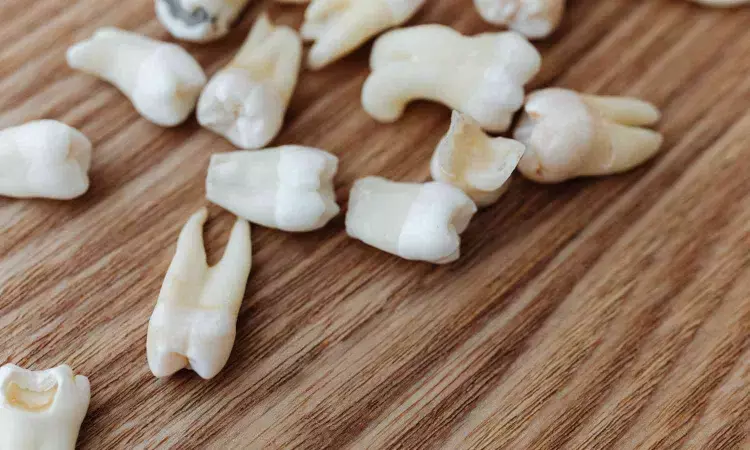- Home
- Medical news & Guidelines
- Anesthesiology
- Cardiology and CTVS
- Critical Care
- Dentistry
- Dermatology
- Diabetes and Endocrinology
- ENT
- Gastroenterology
- Medicine
- Nephrology
- Neurology
- Obstretics-Gynaecology
- Oncology
- Ophthalmology
- Orthopaedics
- Pediatrics-Neonatology
- Psychiatry
- Pulmonology
- Radiology
- Surgery
- Urology
- Laboratory Medicine
- Diet
- Nursing
- Paramedical
- Physiotherapy
- Health news
- Fact Check
- Bone Health Fact Check
- Brain Health Fact Check
- Cancer Related Fact Check
- Child Care Fact Check
- Dental and oral health fact check
- Diabetes and metabolic health fact check
- Diet and Nutrition Fact Check
- Eye and ENT Care Fact Check
- Fitness fact check
- Gut health fact check
- Heart health fact check
- Kidney health fact check
- Medical education fact check
- Men's health fact check
- Respiratory fact check
- Skin and hair care fact check
- Vaccine and Immunization fact check
- Women's health fact check
- AYUSH
- State News
- Andaman and Nicobar Islands
- Andhra Pradesh
- Arunachal Pradesh
- Assam
- Bihar
- Chandigarh
- Chattisgarh
- Dadra and Nagar Haveli
- Daman and Diu
- Delhi
- Goa
- Gujarat
- Haryana
- Himachal Pradesh
- Jammu & Kashmir
- Jharkhand
- Karnataka
- Kerala
- Ladakh
- Lakshadweep
- Madhya Pradesh
- Maharashtra
- Manipur
- Meghalaya
- Mizoram
- Nagaland
- Odisha
- Puducherry
- Punjab
- Rajasthan
- Sikkim
- Tamil Nadu
- Telangana
- Tripura
- Uttar Pradesh
- Uttrakhand
- West Bengal
- Medical Education
- Industry
Darker Composite Shades Enhance Intraoral Scanner Accuracy for Endocrowns: Study

A new study published in the Journal of Esthetic and Restorative Dentistry revealed that composite resin shade significantly affects intraoral scanner accuracy in endocrown restorations. Darker shades improved digital impression precision, suggesting their use for cavity bases may enhance outcomes. The findings emphasize the importance of material shade selection in digital dentistry workflows.
The significant loss of coronal tooth structure that occurs after root canal therapy is one of the many difficulties that arise. In order to improve preservation of the core and the additional coronal restoration, a post is sometimes advised. The production of custom-made posts has become easier and more versatile due to the advancement of computer-aided design/computer-aided manufacturing (CAD/CAM) technology in dentistry, particularly with the new generation of intraoral scanners (IOSs) being validated as an efficient alternative to the traditional impression and the wide range of materials currently available.
Given the fierce competition among manufacturers, it is noteworthy that clinicians frequently prioritize the intra-oral scanner's (IOS) speed and usability in addition to a few other useful features like the option to forego using powder for scanning and the capacity to export files without incurring a release fee. Assessing the impact of composite resin shades (A1, A2, A3, and B1) on scan accuracy using the Trios 3 (3Shape, Denmark) intraoral scanner was the goal of the current investigation.
A removed human molar was placed into a mandibular dentate typodont to create an endocrown chamber. The Trios 3 intraoral scanner was used to scan the composite resin shades (A1, A2, A3, and B1) after they had been successively positioned in the pulp chamber and allowed to light-cure. The intraoral scanner collected test data, while a high-precision extraoral scanner (E1, 3Shape, Denmark) supplied reference data.
A spectrophotometer (Easyshade, VITA, Germany) was used to measure the composite resin shades in order to determine the L*, a*, and b* values. In order to determine the interquartile range (IQR) for accuracy and the root mean square (RMS) values for truth, scanning data were examined in Geomagic Design X.
Shade groups showed significant variations in RMS values (p < 0.001). B1 had the greatest value (0.0336 ± 0.003), while A3 had the lowest (0.0242 ± 0.002). All other comparisons were significant, however A1 and A2 did not reveal any differences. B1 has the greatest IQR value (0.0040), which suggests less accuracy.
Overall, the accuracy of the intraoral scanner was significantly impacted by the shade of the composite resin. For endocrown cavity bases, darker hues are advised in order to maximize digital imprints. To explore these findings in clinical practice, more research is needed.
Source:
Ozden, I., Ozden, Y. E., Ovecoglu, H. S., Kayahan, Z. O., & Blatz, M. B. (2025). Does cavity base shade of endocrowns play a role in the accuracy of intraoral scans? Et al [Journal of Esthetic and Restorative Dentistry]. https://doi.org/10.1111/jerd.13507
Neuroscience Masters graduate
Jacinthlyn Sylvia, a Neuroscience Master's graduate from Chennai has worked extensively in deciphering the neurobiology of cognition and motor control in aging. She also has spread-out exposure to Neurosurgery from her Bachelor’s. She is currently involved in active Neuro-Oncology research. She is an upcoming neuroscientist with a fiery passion for writing. Her news cover at Medical Dialogues feature recent discoveries and updates from the healthcare and biomedical research fields. She can be reached at editorial@medicaldialogues.in
Dr Kamal Kant Kohli-MBBS, DTCD- a chest specialist with more than 30 years of practice and a flair for writing clinical articles, Dr Kamal Kant Kohli joined Medical Dialogues as a Chief Editor of Medical News. Besides writing articles, as an editor, he proofreads and verifies all the medical content published on Medical Dialogues including those coming from journals, studies,medical conferences,guidelines etc. Email: drkohli@medicaldialogues.in. Contact no. 011-43720751


